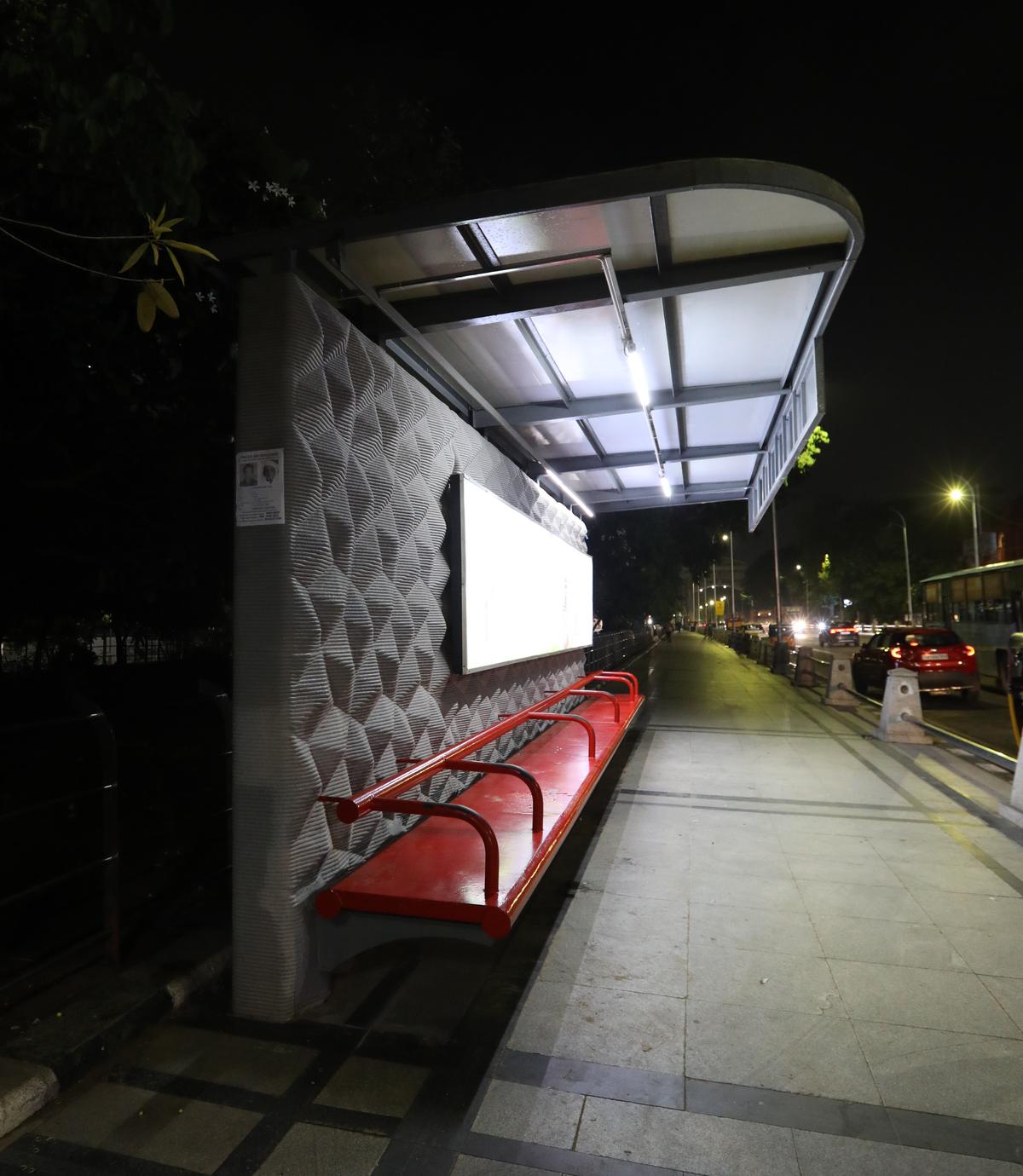
The images of the 3D-printed bus shelter at the Anna University bus stop was taken on June 20, 2025.
| Photo Credit: PRINCE FREDERICK
Anyone hitting Marina Loop Road, Kamarajar Salai and Sardar Patel Road with the regularity of tidal action would have had a long, scarlet-red, metal bench crossing their field of vision.
On these roads, even if they were on their own private wheels, they would likely end up taking in the view of bus shelters sporting these attention-grabbing benches. Greater Chennai Corporation’s Bus Route Roads Department is installing these bus shelters constructed with 3D printing technology. With an air of extemporaneity, these bus shelters are simply called “3D bus shelters”.
Though announced at least a year ago, these 3D bus shelters are only now beginning to draw attention as a “sub-species” of bus shelters in Chennai, as they seem to show up with a slowly increasing frequency across the cityscape. Given the target the BRR Department is working towards — ninety 3D printed bus shelters across Chennai — it has the chance of being elevated to the status of a separate species under the broader genus of bus shelters.
Only recently, a 3D bus shelter was constructed at the bus stop right outside the Pattinampakkam bus terminus on Marina Loop Road. This facility still looks a bit ragged around the edges, as secondary features are still in the process of being added. If one desired to clap eyes on a 3D bus shelter that has been functioning for quite some time and is therefore expected to be fully “suited up”, they could head to the bus stop on Kamarajar Salai diametrically opposite the TWAD Board office.

The 3D-printed bus shelter at the bus stop on Kamarajar Salai opposite the TWAD board office on June 20, 2025.
| Photo Credit:
PRINCE FREDERICK
The one on Kamarajar Salai has a concrete wall with a scraggy surface, the scragginess forming a uniformity of design, that does not lend itself to posters being pasted.
3D printing technology-based construction provides immense flexibility in terms of design. Customisation being possible, these bus shelters can bring variety to the landscape and likely be a refreshing break from the unformity that marks bus shelter design. It remains to be seen if the BRR Department is going to “format” the look of the bus shelters, or experiment with it.
According to a top GCC official familiar with developments to 3D bus shelters, in contrast to what is now seen as the conventional shelter with SS pillars, this one has reinforced concrete pillars.
3D bus shelters at Anna University bus stop on Sardar Patel Road, the bus stop outside the Pattinapakkam bus terminus on Marina Loop Road and the Ice house bus stop on Kamarajar Salai share the look, the reinforced concrete pillars particularly following a format.
The GCC official notes fitting the humongous bench takes some doing; it demands a greater outlay of space (which most bus stops can ill afford). The BRR department needs to work around this challenge while going about their target: constructing 3D shelters at 90 bus stops across Chennai.
The bench has a ground clearance that is just right for people of varying heights to be parked on it comfortably.
The stainless steel bus shelters across Chennai one is accustomed to are known to have offered in many cases benches that are too high or too low for comfort.
The benches at the afore-mentioned 3D shelters comfort in terms of height.
According to Greater Chennai Corporation’s Inclusive Design Manual, at bus shelters, the seating should be “no higher than 450mm from pavement level for better comfort for all users”.
It remains to be seen how in the days to come, the full potential of 3D printed construction technology is realised in the bus shelters which would include introducing features that would enhance safety of commuters (particularly, women commuters) and also address climate concerns.
Published – June 21, 2025 10:40 pm IST